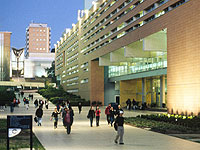 |
|
 |
| |
| |
| |
| |
| |
| |
| |
Campus: Kensington Campus
| |
| |
Career: Postgraduate
| |
| |
Units of Credit: 6
| |
| |
| |
| |
Contact Hours per Week: 3
| |
| |
Enrolment Requirements:
| |
| |
None
| |
| |
Excluded: TELE4333
| |
| |
| |
| |
| |
 |
|
 |
Description
Principles of signal time discretisation, amplitude quantisation, A/D and D/A conversion. Matched filter receiver, principles of single symbol digital signal detection and probability of bit/symbol error. Intersymbol interference (ISI), Nyquist criteria for ISI free transmission. Equalization, linear equalizar, decision feedback equalizer. Adaptive equalization, LMS algorithm (RLS adaptive algorithm - optional). Khinchin's geometrical representation of digital signals. Communication system as a signal vector space. Application of Gram-Schmidt ortogonalization procedure in telecommunications. Modulation schemes BPSK, FSK, QPSK, MSK. Probability of bit error and spectral properties of mentioned modulations. (CDMA and spread spectrum principle - optional). Principles of Information Theory. Entropy, source coding, Shannon channel capacity for discrete and continuous channels. Channel coding theory; Block, cyclic and convolutional codes; Viterbi decoding; Trellis coded modulation. Principles of soft-input soft-output decoding algorithms, turbo codes.
|

